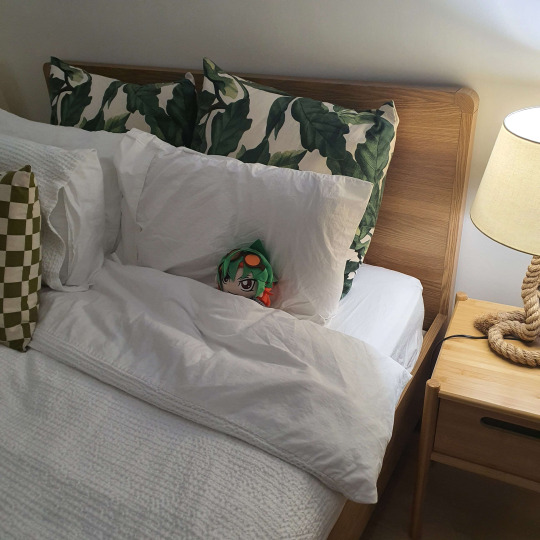#vj gear
Explore tagged Tumblr posts
Text

Dreamweapon
#glitch gear#video synth#analog gear#video art#glitch#synth#vj gear#video production#tachyonplus#glitch art#effects pedal#analog glitch
26 notes
·
View notes
Text
By ness_graphics
Music on
#nestedneons#cyberpunk#cyberpunk art#cyberpunk aesthetic#cyberpunk artist#art#cyberwave#megacity#futuristic city#scifi#cryptoart#visuals#vj visuals#urban decay#underdog#underground#undertale#neoncore#neon colors#tech gear#technocracy#geek#scifi geek#game geek
582 notes
·
View notes
Text
as I dig into making an update for the Dalish Rook mod, I get more and more frustrated with the way "elven" dialogue currently works in the game.
why is it an elven Rook of any background knows that "anvallenim" means "womb" in ancient elven, but then only a Veil Jumper elf knows what the way of three trees is when it's one of the basics of elven culture? and, furthermore, only a Veil Jumper Rook (regardless of race btw) can recognise that Assan is named after the elven word for arrow? why are these requirements such a mess?
#it's already bad enough that only VJs can be canonical Dalish elves WITHOUT any indication by the game that's how it works#but why is the game so random about what only a canonical Dalish elf would know and what isn't#it's not even “why won't the game let me be Dalish” (I don't care about making a Dalish Rook) it's “why won't it be consistent about it”#the womb thing is so egregious to me. like why is *that* the non-gatekept bit#veilguard critical#< what does it say about me that my first ever public veilguard critique is about something like this#apologies I'm a stickler for details and it really grinds my gears when something doesn't follow a proper system#like pick a struggle smh!!!!#flowers.txt#flowers blogs
23 notes
·
View notes
Note
Hi, I want to eventually get into making glitch art and was wondering if you have any resource recommendations?
Heyyy, sorry for the late reply! U_U
This guide is a pretty good starting point to learn the basics: https://glitchology.com/glitch-art-guides/beginners-guide-to-getting-started-with-glitch-art/
You could try out some classic glitch art techniques using Audacity (image to audio to image), or you could use easier apps and websites like PhotoMosh and GlitchLab (on Android). If you want something more complex, you can check out Resolume (more geared towards video and VJ’s—it has some cool glitchy effects). Or you can dive straight into coding and start messing with your own random data like images to create glitch effects yourself!
Also:
13 notes
·
View notes
Text


Been listening to more VJ recently and it put my brain into top gear these past few days.
Ref under readmore
Screenshot taken from the music video for Niet Naar Huis Toe by Vieze Jack on youtube.

#my art stuff#digital art#screenshot redraw#beetlejuice#cartoon#toonjuice#but with a TWIST#cus once again I’m drawing him in one of the outfits of#Vieze Jack#and I am scratching up my walls from it just as much as last time#AUGH I JUST LOVE DRAWING VJ#HE MAKES ME GO GRRRRRRRRR BARK BARK BARK#or like *violent bleating*#or something? ifk man I’m just going insane in the gay brain rn#uhhhhhh#painting#OH AND I ADDED LIL SANDWORM PIRANHA PLANTS CUS I’M NOT ABOUT TO DEAL WITH REAL PLANTS LMAO#I’m gonna be honest. I was streaming this to my friends on discord and the music kept cutting out and not playing-#- and my brushes were slow and it took about a minute for the saving bar to appear on Clip#and it was stressing me out so much so I’m just glad it’s finally finished#I barely even care about thr lil things that don’t looks like they should#I’m so extremely tired and almost out of breath from how stressed it made me to make this#and I’m gonna take a reat and keep watching House for the rest of the day. OTL#break*#forgot to tag#Niet Naar Huis Toe#Vieze Jack Niet Naar Huis Toe
41 notes
·
View notes
Text

now that i've gotten your attention, hi!!
I'm pasu, and this show has consumed every facet of my being ever since I got into the fandom two years ago. it's such a well of inspiration for me; it's as if my attention span shattered into more than four different dimensions because everyday is a battle to decide which arc-v WIP to work on (this is a call for help)


yuya is officially my no.1 but off the record he takes turns with yuri and also yugo, everyday my brain spins a wheel to decide (sorry yuto)



speaking of yuri and yugo i am absolutely very very normal about them


Above all else, I love LOVE making comics!!! both silly and angsty, just about everything under the sun


Animations are also fun!!! I want to make more... (i crave the vj boys moving like a drug because it's the least they deserve)
One time I was really intent on making a yuya + yuri MV for Onoken's cover of IFDD so I guess I can call myself an editor (/j) someone please take these sprites and make my dream come true i'm begging


I also have some fangames i really want to continue work on but my attention span suffers for anything moderately tedious without a deadline...... (this is another call for help)
Speaking of WIPs... Last but not least, here's a link to my ao3! (it's mostly pawn atm but i love writing introspective yuri-centered stuff too)
My main goal is au day because finally, something to kick my butt into gear to organise all my aus together into one post
happy @arcvmonth everybody!! the fun has only just begun i leave you with yuya plush

#arcvmonth#arc-v#arcvmonth2023#i finally let the ifdds out of jail#more like merely opening the cell door because there's still the alternate expression sprite i haven't posted
93 notes
·
View notes
Text
Universal Collision: Meet the Story Characters!

Name: Len
Not to be confused with Red Wolf
Class: 3★-5★ STELLAR AWAKENED
Summoner/Duo: No
🎂Birthday🎂: No
Weapon Type: Bow (EX Weapon: Bow of Control)
STELLAR AWAKENING Release: 5/27/2024
Info
Universal Collision
A boy who comes from Sargnia and is the calm and focused of the group within World Dreamers. However, this becomes geared towards a “Locked-in” when in battle, making sure no enemy gets past his arrows. Despite modern times using guns, he chooses a bow for tradition.
Universal Collision All Stars
A first year student of Yurigawa Academy, known as the VJ for World Dreamers. With his catchy visuals he’s contributed to push World Dreamers more on the mainstream side of music after joining CarlosYT on his second performance. He’s calm and composed even during times of adversity.
VC
(VC Level 1, S1 Chapter 10) Let’s prepare ourselves! - Piercing attacks of all allies +15% (1 Turn)
(VC Level 2, S1 Chapter 34) I shall seek the light! - Piercing attacks of all allies +30% (1 Turn)
(VC Level 3, S1 Chapter 56) Our chance of attack is nigh! - Piercing attacks of all allies +50% (1 Turn)
Skills/Abilities
Tier 1 Skills (2★)
Piercing Arrow - Wind type Piercing attack on a single enemy (S) and piercing resistance of all enemies -15% (3 Turns)
(Passive) Focus - Speed of self +20%
- increases based by the number of buffs user has
- 60% chance of activation
Tier 2 Skills (3★)
(Passive) Counterattack - Has a 50% chance of countering an attack that’s targeting Len
- Perform Piercing attack on a single enemy (M)
Magic Bow - Combined wind and earth type Piercing attack on a single enemy x2 (M) and Magic attack on all enemies (L)
Tier 3 Skills (4★)
Striking Arrow - Piercing attack on a single enemy (L) and piercing resistance of all enemies -40% (3 Turns)
(Passive) Shining Counter - Has a 50% chance of countering an attack that’s targeting any ally
- Piercing attack on a single enemy (XL)
Tier 4 Skills (5★)
Arrow Rain - Wind type Piercing attack on all enemies x5 (L) and piercing resistance of all enemies -35% (3 Turns)
Arrow Storm - Piercing attack on all enemies x10 (XL) and piercing resistance of all enemies -70% (3 Turns) and null status effects (1 Time)
- Enhanced Arrow Rain after clearing Season 1 Chapter 77
Bow of Light - Earth type Piercing attack on all enemies (XL) and stats of all allies +50% (4 Turns)
Bow of Holy Light - Earth type Piercing attack on all enemies (XL) and stats of all allies +50% (4 Turns) and Physical Resistance of all enemies -70% (5 Turns)
- Enhanced Bow of Light after clearing Season 1 Chapter 77
Bow of Holy Light+ - Earth type Piercing attack on all enemies (3XL) and stats of all allies +120% (4 Turns) and Physical Resistance of all enemies -95% (5 Turns) and stack 1 Archer’s determination on user (Max: 3)
Archer’s Determination
- Attacks of user +25% (Max: +75%)
- Speed of self +50% (Max: +150%)
- When at 3 Archer’s Determination:
- Consume all stacks and grant Hold Ground to all allies
- Enhanced after clearing Season 2 Chapter 74A
Gleaming Arrow - Piercing attack on a single enemy (XL) and piercing resistance of all enemies -50% (3 Turns) and piercing resistance of all allies +50% (3 Turns)
Gleaming Arrow+ - Piercing attack on a single enemy x4 (4XL) and piercing resistance of all enemies -50% (5 Turns) and piercing resistance of all allies +50% (5 Turns) and restore all statuses
- When inside Piercing Flash Zone, grant Singular Focus on self (3 Turns)
- Attacks of user +50% when attacking a broken enemy
- Enhanced after clearing Season 2 Chapter 74A
Weapon Skills/Abilities
Bow of Mind - Psychic type piercing attack on a single enemy (L) and inflict confusion (3 Turns)
Wind Blast - Wind type piercing attack on all enemies x2 (XL) and Deploy Piercing Flash Zone
When hit by an attack, counter with [Gleaming Arrow/Gleaming Arrow+]
When Len equips Bow of Control
When in Piercing Flash or Wind King Zone, Piercing Arrow/Striking Arrow/Gleaming Arrow can now initiate Awaken Zone
Ultimate/Linked Skill
Lunar Eclipse - Piercing attack on all enemies x6 (XL) and extend the debuffs of all enemies by 2 turns
Stellar Skills/Abilities
(Stellar Skill) Guiding Moonstrike - Wind type piercing attack on a single enemy (3XL) and Bow attacks of all frontline allies +25% (5 Turns) and Piercing resistance of all enemies -50% (3 Turns)
- Fill Ultimate Skill Gauge by +10%*[No. of Bow equipped users] in the party (Max Ult. Skill Gauge: 3200%)
- Attacks of Lance/Gun/Bow users +200% (1 Turn)
- Wind/Earth type attacks of all frontline allies +150% (1 Turn)
- When used in Stellar Burst, Perform Moonstrike Requiem instead
(Stellar Burst) Moonstrike Requiem - Wind type piercing attack on a single enemy (5XL) and Bow attacks of all frontline allies +150% (7 Turns) and Piercing resistance of all enemies -150% (5 Turns)
- Fill Ultimate Skill Gauge by +50%*[No. of Bow equipped users] in the party (Max Ult. Skill Gauge: 3200%)
- Attacks of Lance/Gun/Bow users +400% (5 Turns)
- Wind/Earth type attacks of all frontline allies +300% (3 Turns)
(Stellar Passive) Stellar Awakening Fill Ability - When 3+ Bow users are on the Frontline:
* User's Stellar Burst Gauge Fill rate increases (M)
(Stellar Passive) Stellar Awakening Activation Ability - When Stellar Burst is activated with user and Gauge has majority Shadow:
* Grant Singular Focus to user (Current Turn only)
#universal collision#multifandom#Universal Collision Len#Stellar Awakened#UC Zone Setter#Released early
0 notes
Text
Exploring the Technology Behind VJ Instruments' Rapid Dryer

As much as this relates to lab gears, precision and efficiency are most desirable parts to be looked at. Laboratories are always on the lookout for faster ways of processing without compromising on accuracy. VJ Instruments' Rapid Dryer seems to come in as a solution to one of the most overlooked yet integral steps in laboratory processes—the drying of samples. The advanced technology behind this makes the piece of equipment enhance productivity with consistency in lab results.
The Problem: Time-Wasting and Ineffective Drying Techniques
Drying is seen as an unexciting step in the laboratory workflow. However, it becomes the most important step in several processes, including material analysis, chemical testing, or sample preparation. The conventional methods of drying, for instance, with air-drying or use of ordinary ovens, take a lot of time and can be less effective. Extended periods of drying bring about the degradation of a sample due to which the results obtained are compromised, which in turn delays experiments.
For labs that need to finish projects within tight timelines or have enormous sample loads, intermediate bottlenecks are created due to inefficiency in the drying process. That is where VJ Instruments' Rapid Dryer steps into the fray with a solution especially designed around the very bottlenecks created here.
Engineering Behind the Rapid Dryer: A Game-Changer
Not another drying machine would sum up the VJ Instruments Rapid Dryer, as it is a blend of precision engineering and advanced technology that is revolutionizing the way samples are dried in the laboratory in a completely new manner.
Its core lies in an extraordinary air-flow system that maximizes the circulation of hot air around the sample to ensure it dries uniformly from all sides; hence one saves time in achieving complete dryness. Unlike a conventional oven, where samples can get overdried or underdried, the Rapid Dryer's smart temperature controls see to it that the heat levels remain steady, which means nothing goes amiss with the integrity of samples.
But one of its most salient features is the compact, space-saving design, whereby it can fit into any lab setting without being too broad or taking up too much valuable workspace. The dryer has adjustable settings, so that lab technicians can set parameters according to the particular needs of each sample, making it versatile for various applications.
Why Select the Rapid Dryer? Consider Your Benefits
Now that technology has been integrated, let us attempt to understand why Rapid Dryer is superior to the conventional method. For one, it is quite easy to express that the first reason lies in its speed. Where conventionally dryers take hours to dry certain samples, the Rapid Dryer helps reduce time by a significant margin, enabling labs to process a task much faster and adhere to deadlines while not losing quality.
Also, its energy efficiency ensures that in terms of drying fast, it does not result in high power consumption. It makes the Rapid Dryer an effective solution as well as an eco-friendly product as this is a trend widely needed among lab applications.
Compared to older drying technologies, which require much human intervention and guesswork, all things are in very good control and reliable in this Rapid Dryer. Risk to human error is at its lowest as the data generated in the dried samples is now more dependable.
The Decision: Why Labs Should Invest in the Rapid Dryer
For any lab manager or decision-maker, the question ultimately boils down to: why should I invest in this equipment? In this case, the Rapid Dryer would offer efficiency enhancement, accuracy, and ultimately cost saving over time.
The speed of the Rapid Dryer allows labs to put more sample sets in much less time and thus increase their productivity. In addition, it maintains the integrity of samples, unlike slow drying that leaves room for mistakes and repeat experiments. This was actually the reason to implement this level of precision in labs that would handle sensitive or highly valued material.
Besides this, the cost savings created are not only long-term in effect - saved energy consumption, less sample waste, and reduction in delays - but also a smart investment into the Rapid Dryer. It is not just another equipment; it's all about the tool that improves the lab workflow throughout and provides both short-term and long-term value.
Conclusion: The Future of Lab Drying is Here
VJ Instruments brings accuracy to a faster, more reliable pace in a rapidly fast, high-speed drying system: the Rapid Dryer. It serves to address the concerns of traditional drying technology and provides labs with solid, dependable results they can count on.
Whether one's facility is a high-throughput research lab or one of the smaller facilities processing sensitive samples, efficiency and precision are here in one convenient solution. Time to say goodbye to antiquated drying techniques and hello to the future of laboratory drying with VJ Instruments' state-of-the-art technology.
0 notes
Photo

Video glitch synth gear created for artists in the realm of photography, VJ, graphic design, video productions and modular synth users. Tools for analog video circuit dreamers and lovers of experimental camera art.
0 notes
Text
i do love my job. and i don’t mind working in what is essentially a tourism industry in the summer but this is one thing that really grinds my gears. it’s also the end of the summer ive worked twelve 70+ hour weeks in a row and it’s gotten to me. but i felt this way last summer and the summer before! like all i want is some kind of bonus. like “you stayed through the whole season here’s a couple hundred bucks” cannot be that hard i see how many people are on the boats you’re making a lot of money right now. i don’t even want more pay for the 4th or VJ day it literally just feels like a spit in the face that it’s labor day and you’re treating your labor like shit.
gotta say it really does feel so insulting working labor day weekend and labor day for no extra pay no extra anything while you have to watch everyone else get shitfaced on vacation. “wow you’ve been here all day did you get a break?” NO I DID NOT because you wanted to go on vacation! happy labor day! i don’t even get holiday pay for fucks sake.
#i don’t think I’ve ever ranted this much on here but it’s really getting to me at this point in the summer#day 5 of my 7 day week is not treating me well.#like i stuck it through a lot of shit this season and this weekend is so shit and i know im getting nothing for it
5 notes
·
View notes
Text






Vortex Decoder
#video art#glitch art#analog glitch#photography gear#vj gear#vhs art#analog#video synth#video production#tachyonplus#vhs aesthetic#vaporwave#camera gear#noise#analog video#synth#control voltage
14 notes
·
View notes
Photo

The Evolution My first projector is my Casio at the top. It's pretty bad ass, as big as a laptop super portable. Then came my Nec projector it's a bit brighter about avg. size home projector. Then just last month I got my Epson which is double the lumens of both of my older projectors. My first 5k. I'm about to do sick delicious thangs with this... I bought my first projector and midi controller ( Akai LPD8 MK2 ) when I first met @gingeeworld which was the start of my journey in Vjing... #Visuals #Projection #ProjectionMapping #VJ #Gear #Evolution #Bigger #Better #Stronger #Installation (at Los Angeles, California) https://www.instagram.com/p/ClFwDvyLToz/?igshid=NGJjMDIxMWI=
0 notes
Text
So um, yes I do also play the redheaded stepchild of the Fallout franchise with my housemate because it’s the only multiplayer Fallout option we have, hooray. Here’s a quick piece of my 76 character, VJ D’Milieu.

She enjoys:
- Sofia Daguerre, my beloved (again with my characters and the loveable geeks)
- Daphne (Sofia and VJ and kiddo Daphne = adorkable geeky family. Headcanon is that she also has at least one bio kid b/c she volunteered as surrogate and bio-mom for a pair of friends, the female-bodied of which could not carry a child)
- scavenging, collecting the group’s ammo back off dead enemies - PLEASE take back your #$&!ing railway spikes so she can walk
- creature taming - enjoys having a giant guard sloth to greet visitors
- hazardous materials acquisition - bring on the glowing flora
- trespassing on others’ property to see the cool shit they built
- reestablishing the West Virginian Minutemen Responders, including supplying her buddy’s infirmary (my housemate built her main camp into a Responders hospital and I love it)
- building camps that create foot travel access through/across otherwise impassable natural barriers on the map (usually cliffs)
- being the group chemist/herbalist: her main camp/house/shelter are FILLED with plants. Also the group repair master/ammosmith - grats, you still haven’t run out of ammo and your gear is still intact as we begin the 347th scorchbeast fight of today’s Cranberry Bog session
- non-raid combat: melee or sniping; raid combat: begrudgingly resigned to using spin-up heavy weapons and complementing perk set/SPECIAL loadout
She dislikes:
- The Overseer. VJ thinks she’s irresponsible as shit and would deck her immediately if she wasn’t marked as an essential npc. (I agree with VJ. Bitch, I too graduated early from an advanced degree program/was super young when I got certified to do my job, and I really hope I didn’t come across to people as wholeheartedly believing I was a goddamn Mary Sue and entitled to reverence no matter what shitty choices I made)
- don’t make VJ clean up all your messes and carry your emotional baggage and kill off the fiancée you abandoned to a fate worse than death as the trade-off for getting bribed with a nice cushy control vault job/not whistleblowing on Vault-Tec’s wildly unethical experimentation. Or, y’know, do all those things and make her listen to holotapes full of your whining about it
- sure as hell don’t do the above while you a) run off on a goddamn vacation/journey of self-realization (because wtf else are you doing going everywhere but to the missile silos and leaving me holotapes to find like this is a goddamn Pioneer Scouts scavenger hunt), b) abandon literally all of your charges, c) throw a temper tantrum by holotape about using nukes when that is the sole option to get to/kill off the scorchbeast Queen and keep everyone from turning into ultracite zombies, and get to/kill off the wendigo colossus that we really don’t need running amok either, and then d) crop back up and act like you’re still running the show
- also sure as hell don’t then voluntell VJ to drag your ass through the Nuka building and then go make settlers and raiders sing kumbaya together at the start of the next main quest arc
- gtfo VJ’s lawn you sanctimonious asinine woman jeebus I’d rather listen to Rose’s grating voice on repeat than deal with you
- at least they included hostile dialogue options for interactions with her
- did I mention VJ dislikes the Overseer
#holy shit not fallout 4 fanart#fallout#fallout 76#fanart#my artwork#oc art#worldbuilding#headcanon#seriously though please let me deck the Overseer#eda draws
16 notes
·
View notes
Text
Ronnie Bell Following
Prototype Douglas A/B-26 Invader
The A-26 Invader originally began as a private venture on the part of the Douglas plant at El Segundo, California. The Douglas XA-26 was designed as an improved and updated successor to the Douglas A-20 Havoc.
The aircraft was based on the common light attack/medium bomber configuration: twin-engine, shoulder-mounted wings and tricycle landing gear.
It was one of very few aircraft to be entirely conceived, designed, developed, produced in quantity and used in large numbers, all during World War II. The whole programme was terminated after VJ-Day and anyone might have judged the aircraft finished. With new jets under development, Douglas made no effort to retain any design team on Invader development, neither did the Army Air Force show any interest. Yet this aircraft proved to be of vital importance in the Korean War and again in Vietnam and, by 1963, was urgently being remanufactured for arduous front-line service. Many remain in combat units 30 years after they were first delivered, a record no other kind of aircraft can equal.
The design was prepared by Ed Heinemann at El Segundo as a natural successor to the DB-7 family, using the powerful new R-2800 engine. The Army Air Corps ordered three prototypes in May 1941, one with 75 mm gun, one with four 20 mm forward-firing cannon and four 0.5 in guns in an upper turret, with radar nose, and the third as an attack bomber with optical sighting station in the nose and two defensive turrets. In the event it was the bomber that was bought first, designated A-26B. Much faster than other tactical bombers with the exception of the Mosquito, it was 700 lb lighter than estimate, and capable of carrying twice the specified bomb load. It was the first bomber to use a NACA laminar-flow airfoil, double-slotted flaps and remote-control turrets.
The A-26 was an unusual design for an attack bomber of the early 1940s period, as it was designed as a single-pilot aircraft (sharing this characteristic with the RAF's de Havilland Mosquito, among others). The aircraft was designed by Edward Heinemann, Robert Donovan and Ted R. Smith.
Three prototypes were built. The XA-26 (serial number 41-19504) was first to be completed, and resembled the A-26C, with a Plexiglas bombardier's nose. It was armed with the remote control upper and lower turrets and was used for most of the early flight tests of the Invader.
The second prototype, the XA-26A (serial number 41-19505) was for the night-fighter version of the Invader. Douglas line drawing show it with a four gun mid-upper turret, but it was built with four 20mm cannons carried in a ventral tray below the bomb bay, a longer radar carrying nose, two crewmen and no turrets. The XA-26A was abandoned when tests showed that it was no better than the Northrop XP-61 Black Widow, which had been undergoing flight tests for two months by the time the XA-26 made its maiden flight.
The third prototype, the XA-26B (serial number 41-19588) was added to the program just after the first two, carried a crew of three and was armed with a solid nose that could carry a wide number of different guns, from .50in machine guns up to a massive 75mm cannon. The XA-26B was the only aircraft to carry the 75mm gun, on the right side of the nose and protected by a retractable cover. The same 75mm gun was installed on the B-25 Mitchell, and proved to be disappointing in service, partly because of its slow rate of fire and partly because suitable targets were often rare.
The Douglas XA-26 prototype (41-19504) first flew on 10 July 1942 at Mines Field, El Segundo, with test pilot Benny Howard at the controls. Flight tests revealed excellent performance and handling, but there were problems with engine cooling which led to cowling changes and omission of the propeller spinners on production aircraft, plus modification of the nose landing gear after repeated collapses during testing.
The A-26 was originally built in two different configurations. The A-26B had a "solid" nose, which normally housed six (or later eight) .50 caliber machine guns, officially termed the "all-purpose nose", later commonly known as the "six-gun nose" or "eight-gun nose". The A-26C's "glass" nose, officially termed the "Bombardier nose", contained a Norden bombsight for medium altitude precision bombing. The A-26C nose section included two fixed M-2 guns, later replaced by underwing gun packs or internal guns in the wings.
After about 1,570 production aircraft, three guns were installed in each wing, coinciding with the introduction of the "eight-gun nose" for A-26Bs, giving some configurations as many as 14 .50 in (12.7 mm) machine guns in a fixed forward mount. An A-26C nose section could be exchanged for an A-26B nose section, or vice versa, in a few man-hours, thus physically (and officially) changing the designation and operational role. The "flat-topped" canopy was changed in late 1944 after about 820 production aircraft, to a clamshell style with greatly improved visibility.
Alongside the pilot in an A-26B, a crew member typically served as navigator and gun loader for the pilot-operated nose guns. In an A-26C, that crew member served as navigator and bombardier, and relocated to the nose section for the bombing phase of an operation. A small number of A-26Cs were fitted with dual flight controls, some parts of which could be disabled in flight to allow limited access to the nose section. A tractor-style "jump seat" was located behind the "navigator's seat." In most missions, a third crew member in the rear gunner's compartment operated the remotely-controlled dorsal and ventral gun turrets, with access to and from the cockpit only possible via the bomb bay when that was empty.
Via Flickr
6 notes
·
View notes
Photo

Gear & Leather night at Tryangles on Friday night in Salt Lake City! ⛓🖤🦍 (at Club Try-Angles) https://www.instagram.com/p/CSnf6r1H-Vj/?utm_medium=tumblr
10 notes
·
View notes

